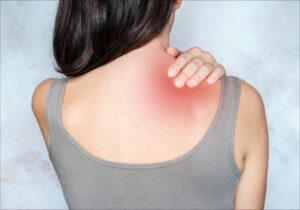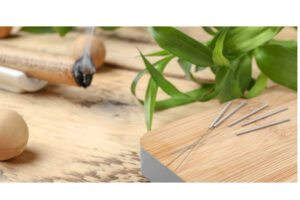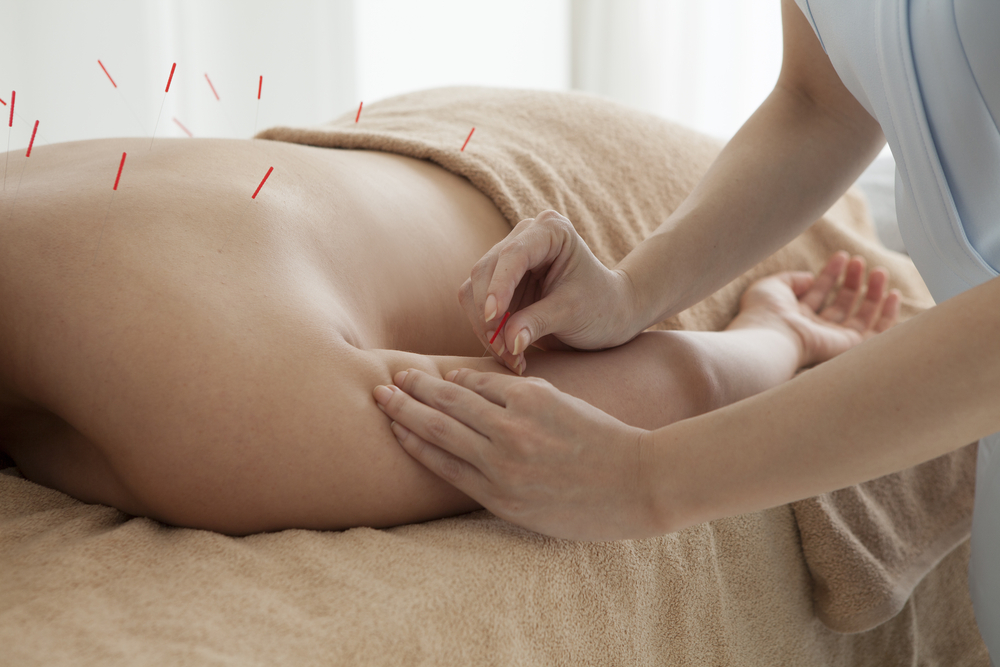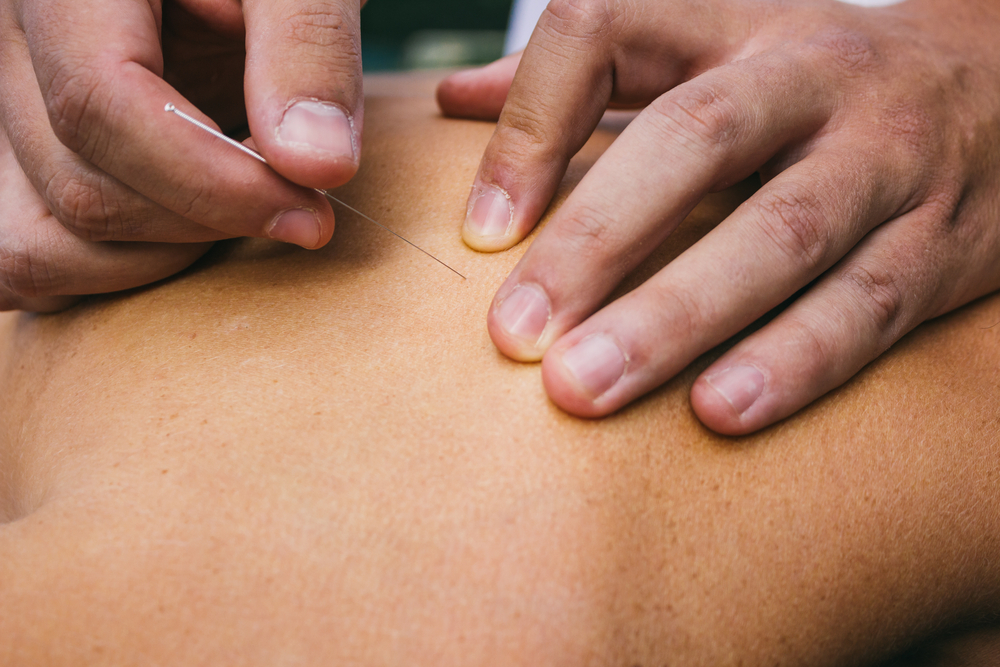People often ask me if I do dry needling, and if there is a difference between acupuncture and dry needling. It’s a great topic! Dry needling and acupuncture are both minimally invasive, needle-based treatments that can help relax and release painful, tight knots in muscles, often called “trigger points”. Let’s review the techniques to help you decide if one of these might be right for you.

What is a “trigger point”?
Trigger points are tight, irritable spots within a muscle or the connective tissue around it. These sensitive or painful lumps form in an area of strain, where your muscle is chronically “stuck” in contraction. You can apply some type of energy to loosen or break these up, like massage, ultrasound, heat, and/or various types of needling.
Trigger points can be caused by injury, strain, repetitive motion, stress, anxiety, or poor postural habits. If you spend a lot of time hunched a screen, you know what I’m talking about! These tight, tender knots can also cause pain downstream, called “referred pain”. Depending on the location, this can lead to headaches, or pain down the legs (sciatica). Painful trigger points can interfere with your sleep and lead to chronic fatigue.
What is “dry needling”?
In “dry needling”, a provider inserts a fine, bullet-shaped needle into a tight, contracted muscle or its surrounding connective tissue. It is called “dry” to distinguish it from another type of trigger point treatment where medication, a steroid or local anesthetic, is injected through a hollow hypodermic needle. The goal of both types of treatments is to release restrictions in the tissue.
Dry needling works by stimulating the muscle to relax. Sometimes, you can feel the “twitch” as the muscle re-sets, bringing an immediate sensation of relief. As the muscle relaxes, circulation is restored. Oxygen and nutrients are free to flow in, and the substances responsible for inflammation are washed out.
Many therapists use dry needling as part of a broader treatment plan that includes things like exercise, stretching, or massage. Specific needling techniques vary, but the concept is based on sound physiologic principles, grounded in Western medicine.

What is acupuncture?
Acupuncture is based on the principles of Traditional Chinese Medicine (TCM), in which health is dependent on the smooth flow of Blood and “Qi” (energy) throughout the body. An acupuncture treatment is holistic, with a goal of balancing and harmonizing this flow.
In an acupuncture treatment, tiny needles are inserted into influential points along energy channels called “meridians” to restore balance to the body. A trigger point is a reflection of imbalance in the body’s energetics and is not the sole focus of the treatment. A comprehensive acupuncture treatment promotes the flow of Blood and Qi throughout the body. This often relieves the painful trigger point while also addressing its root cause, providing deep and long-lasting healing.
Are there similarities between acupuncture and dry needling?
There is common ground between dry needling and acupuncture. Both use tiny, bullet-shaped needles to produce a healing response through the stimulation of connective tissue. Both offer a non-pharmaceutical approach to relieve pain and restore function.
How are acupuncture and dry needling different?
Dry needling, even as part of a more comprehensive treatment plan, is targeted at relieving the painful knot in the muscle. The needle is often inserted directly into, or very close to, the trigger point itself.
Acupuncture is a holistic treatment to restore balanced flow of energy throughout the body. Needles may or may not be placed near a trigger point, but the goal of the treatment is to address problems at the root.
Do the needles hurt?
Acupuncture needles are tiny and so flimsy that they need to be inserted through a small tube. The pressure of the tube on the skin also serves to blunt the sensation of the needle entering the body. There is sometimes a brief achey feeling as the body “grabs hold” of the needle, but many people don’t feel the needles at all.
With dry needling, the needle is still quite thin, but a bit stiffer, and is often directed at or very near a tight, irritable area. The inflammation can make the area more sensitive to any kind of touch, including a needle. Also, the muscle release itself can be associated with a strong sensation.
Can acupuncture be combined with dry needling?
Absolutely! At Acupuncture Energetics, we practice a Japanese style of acupuncture that identifies energetic imbalances through touch. This is also called “integrated structural acupuncture”, meaning we assess your body’s structure to guide our treatment choices.
As a first step, we perform an individualized balancing treatment, generally involving both the front and the back of the body. Most patients find this deeply relaxing, and often tight and tender areas melt away after this phase of the therapy.
If muscles are still tight or tender, we continue to try to release them without directly needling the painful area. Patients are often amazed that they can experience tremendous relief through this approach!
As a final step, for more stubborn problems, we use an indirect style of dry needling that releases the connective tissue around the “hot spot”. We often see the muscle “twitch” as it re-sets, without ever having to directly needle the inflamed area. Patients still experience some sensation as the muscle releases, but the indirect approach tends to be gentler than other techniques.

The Bottom Line:
At Acupuncture Energetics, we start with a holistic treatment to balance the flow of energy within the body, then try to release remaining muscle knots without direct stimulation. For stubborn situations, we perform an indirect style of dry needling to release the tight knots. With this approach, we avoid the discomfort that can sometimes be associated with other dry needling techniques and promote long-lasting healing by addressing the problem at its root.

